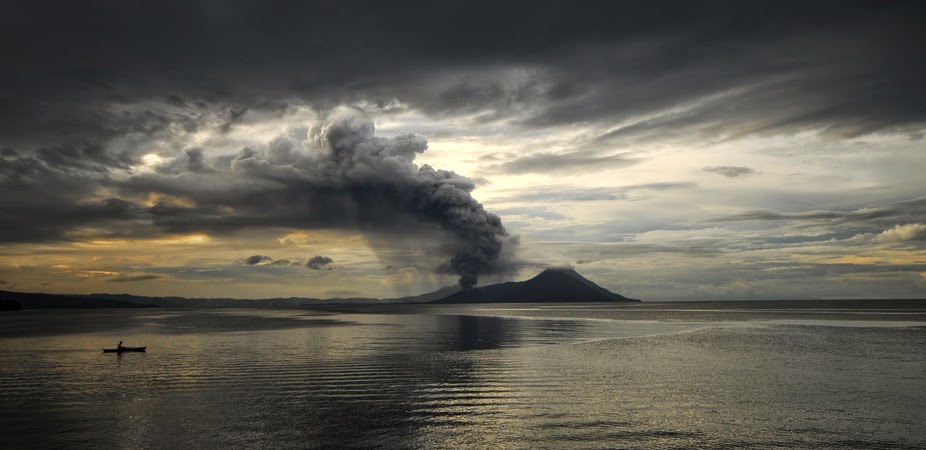
Last week, the eyes of volcanologists – and presumably a few nervous pilots – were fixed on Iceland. But unexpectedly, the volcanic eruption that made headlines happened on the other side of the world, in Papua New Guinea.
Before dawn on August 29, Tavurvur – a stratovolcano on the island of New Britain, in Papua New Guinea’s eastern archipelago – awoke spectacularly after almost a decade dormancy. The eruption shot lava hundreds of metres into the air, while the accompanying ash cloud reached 18km, almost double the cruising altitude of most commercial aircraft. As a precaution, several flights from Australia were rerouted around the volcano.
The explosions at Tavurvur have since died down somewhat, though as of Sunday the volcano was still ejecting material from its crater. The activity may still intensify. Regardless of how the eruption proceeds, this is a volcano worth remembering.
The first interesting thing about Tavurvur is that it is not alone. It is just one of a number of closely spaced volcanoes on the north-eastern tip of New Britain, all clustered around the rim of Rabaul Caldera – a gigantic (14x8km) submerged volcanic crater.
Don’t be concerned if you don’t know much about Rabaul. Until recently, not even volcanologists did. The eruptive history of Tavurvur and its volcanic entourage was largely a mystery until the 1970s, when an increase in seismicity beneath the region prompted the first extensive volcanological survey.
It revealed that, over the past 7,000 years, a number of huge, highly explosive eruptions had occurred. These cataclysms hollowed out Rabaul caldera. The largest of them occurred in the late 6th century, and is believed to have generated pyroclastic flows – that of hot gas, ash and rocks blown out of a volcano – reaching at least 50km from Rabaul. This massive eruption probably had a volcanic explosivity index of six, which is equivalent to that of the 1883 eruption of Krakatoa. And yet, while the former lives in infamy, relatively few people have even heard of Rabaul.
To the locals, however, the volcano’s destructive potential had long been notorious. In 1937, more than 500 people were killed when both Tavurvur and Vulcan, another of Rabaul’s volcanoes, erupted simultaneously. The destruction was horrific. Most of the fatalities were inflicted by pyroclastic flows, crushed buildings and volcanic bomb impacts.
Then, in 1994, after more than half a century of quiet, exactly the same thing happened. Vulcan and Tavurvur erupted in tandem. A swift and efficient evacuation ensured that most of Rabaul’s 17,000 inhabitants survived. Nevertheless, five people lost their lives, and the town itself was obliterated – three quarters of its buildings were destroyed.
The bizarre tendency of Tavurvur and Vulcan to erupt together is fascinating scientifically. But it is also devastating to the humans who live in their shadows.
The August 29 eruption was small by historic standards. But it will not be the last. In the past, eruptions at Rabaul have come as frequently as every two years.
There is another reason to keep your eye on Rabaul caldera. While small eruptions are fairly common, experts also believe that a big one may be brewing. Devastating eruptions like the ones which carved out the caldera take place on average every few thousand years. And as the last one struck 1,400 years ago, the clock is well and truly ticking. The rebuilt Rabaul town now has only around 4,000 inhabitants, but tens of thousand more live within touching distance of a large blast. This far-flung island is worth watching.
Note : The above story is based on materials provided by The Conversation
This story is published courtesy of The Conversation (under Creative Commons-Attribution/No derivatives).









